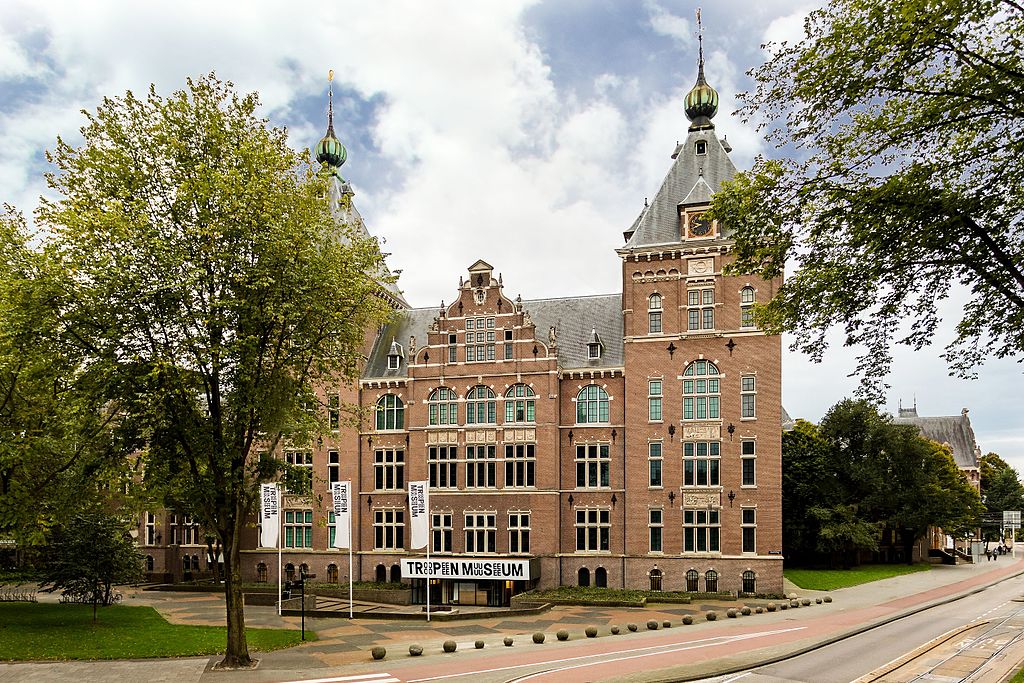
Stolen human remains and the ceremony of death are at the heart of a modern museum controversy. As people go about and enjoy the holidays in cities around the world, museums are among the most common destinations for touring and visiting. But lately, in the museum world, there has been a reckoning over the appropriateness of taking—or outright stealing—sacred objects, and especially skeletons and human remains, then transporting them across oceans or continents to foreign lands and putting them on display.
At the center of the controversy is a grand and highly popular museum in Paris overlooking the Eiffel Tower called the Musée de l’Homme, or Museum of Mankind. “Every year, hundreds of thousands of visitors flock to this anthropology museum to experience its prehistoric skeletons and ancient statuettes,” the New York Times recently reported. “But beneath the galleries, hidden in the basement, lies a more contentious collection: 18,000 skulls that include the remains of African tribal chiefs, Cambodian rebels, and Indigenous people from Oceania. Many were gathered in France’s former colonies, and the collection also includes the skulls of more than 200 Native Americans, including from the Sioux and Navajo tribes.”
Shannon O’Loughlin, the chief executive of the Association on American Indian Affairs, a nonprofit promoting Native American cultural heritage, said that her “heart fell” when she learned of the Sioux and Navajo skulls in the Museum of Mankind basement.
The remains are stored in cardboard boxes on metal racks and are linked to France’s troubled colonial history. For example, there are the bones belonging to the wife of the founder of the 19th-century Toucouleur Empire of West Africa, remains of a Sudanese warlord who ruled over part of Chad in the 1890s, and the bones of a family of Canadian Inuits that were exhibited in a human zoo in Paris in 1881. “The museum’s skulls were collected during archaeological digs and colonial campaigns and were once prized by scientists exploring racial differences,” the New York Times article explained.
Ali Farid Belkadi, an Algerian historian, discovered a particularly troubling part of the collection. Belkadi had begun researching the Museum of Mankind’s collections and learned that it contained the skulls of resistance fighters and civilians beheaded during France’s 19th-century conquest of Algeria, including resistance leaders from the battle of Zaatcha, a village that French troops violently crushed in 1849. The heads were displayed on poles and later taken back to France as war trophies.
“It’s the skeleton in the closet,” Pierre Ouzoulias, a French senator, told the New York Times. “No one knows how to get out of this.”
France is not the only country that is going through a recking on this issue. In 2020, the Tropenmuseum, an ethnographic museum located in Amsterdam, Netherlands and founded in 1864, announced that a team comprised of researchers from five academic institutions, five Dutch museums, and international partners would commence a four-year research project to address issues surrounding museum collections collected in the colonial period. “We bring our international knowledge and networks together in search of answers to important social issues surrounding the collections,” stated Susan Legêne, a professor of political history and the Dean of the Faculty of Humanities at Vrije Universiteit Amsterdam. “This goes beyond questions such as where objects come from and to whom they belong. Importantly: for whom do they carry meaning today, and how or where does this meaning are most relevant are important questions?”
In 2021, Germany’s Commissioner for Culture and the Media announced a three-year collaborative research project to investigate the provenance of human skulls from German West Africa. “Among the collections of the Staatliche Museen zu Berlin’s Museum für Vor- und Frühgeschichte are 477 human skulls that were brought to Germany from West Africa during the colonial era,” reads a museum press release. “The main aim of the project is to facilitate their repatriation.”
The skulls are part of anthropological collections that include around 7,700 specimens of human remains from almost all parts of the world, amassed in the 19th and early 20th centuries. Around one-third of these artifacts have a colonial legacy, having been acquired during the colonial period from former German overseas territories in Africa and the Pacific region.
There is some indication that Germany has been a leader in stolen skull repatriations. In February, Edward Halealoha Ayau, a lawyer from Hawaii, led a delegation on a five-city tour across Europe to bring Hawaiian human remains home. He told the New York Times that his grandmother had given him the mission to bring his ancestors home 30 years ago. “She told me the house couldn’t stand again unless the foundation was firm,” he said. “She told me to go and get them, and I did.”
The Hawaiian delegation collected 58 skulls — known as “iwi po’o” — that were to be buried when they returned home to the tropical Pacific island. “In our culture, exposing iwi to light is considered highly offensive,” Ayau said. “Removing them, subjecting them to examination, putting them on display — those are all examples of exposure.” Ayau stated that German museum officials “were very respectful of Hawaiian values and humanity in handling these claims,” and “everyone recognized the need to do the right thing.”
The stories of how these skulls came to be in the possession of museums half a world away in Germany are indeed harrowing. Bernhard Heeb, a scientist working on the project, explained that many of the skulls were removed by a man named Hermann Otto Finsch, a 19th-century naturalist. Astonishingly, Heeb was able to track his journal down in Vienna. It suggested that Finsch had stumbled across an ancient burial ground. Finsch wrote that he had discovered most of the remains on the beach at Waimanalo on the island of O’ahu in about 1880. “The skeletons were lying, or originally lay, a few feet deep, under the grassy soil, and, when the sea rose, they were exposed,” Finsch wrote in his journal. “I took almost everything in the way of usable skulls and just left broken ones, as well as perhaps a dozen without lower jaws.”
The “human remains had “no place in our museums and universities,” Claudia Roth, Germany’s culture minister, said in a statement, explaining that she welcomed the return of the skulls to Hawaii. Eight were handed back by the Übersee Museum in the northern German city of Bremen during a simple and solemn ceremony. After speeches, Ayau and two of his colleagues sprinkled the people present with salt water as part of a traditional Hawaiian cleansing ritual. Wiebke Ahrndt, the director of the Übersee Museum, told the press that the museum’s leaders “must take responsibility for the misdeeds of our predecessors…We can’t undo the wrongs, but we can try to make amends.”
It does seem to be a very different message than the one being delivered by the French. At the Museum of Mankind in Paris, some 18,000 skulls are still hidden in the basement, stored in cardboard boxes on metal racks, human remains linked to France’s troubled colonial history.
“Our museums should do some soul-searching,” André Delpuech, a former director of the Museum of Mankind who left that post in January 2022, told the New York Times. “But so far, it’s been a head-in-the-sand approach.”









